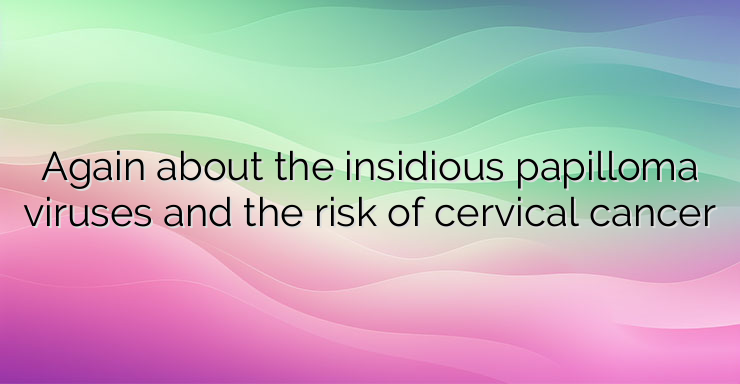Human papillomavirus infection is often asymptomatic, which makes it even more insidious, since, although in a small percentage, it creates a serious risk of developing cervical cancer. And the virus is common – three out of four people carry one or more strains of human papillomavirus (HPV). Annually, the cases of HPV infection increase by 6.2 million more. Fortunately, most papillomaviruses do not cause disease and the immune system successfully suppresses them. On the other hand, about 5% of women suffer from infection with high-risk strains of the papilloma virus, which are the cause of the development of cervical cancer. Unfortunately, our country occupies a leading place in terms of incidence of this type of cancer in Europe. Every year, 1,200 new cases are registered in our country, and around 350 Bulgarian women lose their lives. There is also an unpleasant trend of increasing its frequency and falling in the age limit for its appearance. As a viral infection, the human papilloma virus cannot be cured. It cannot be claimed, however, that even if the virus does not cause symptomatic complaints, it does not cause changes at the cellular level, as herpes virus infection, for example, passes into a latent state in the body. Human papillomavirus infection can cause cancer in both women and men, cervical cancer being just one type. Others affect the vagina, penis, anus, and throat. There are over 100 types of human papillomaviruses. According to their name, they lead to the formation of warts or papillomas – benign neoplasms that can be found on other parts of the body, such as the hands and feet, in addition to the genitals. However, these strains are difficult to transmit from person to person and are different from those that infect genital organs and lead to cancer. More than 30 strains of papillomaviruses are sexually transmitted, 15 of which cause cervical cancer. High-risk are HPV 16 and HPV 18, which are the cause of cancer in 70% of cases, as well as strains 45, 31 and 33. In total, they are responsible for more than 80% of cervical cancer cases in the world, such as in our country the number is higher at 97%. HPV 6 and HPV 11 strains are considered to be low-risk, which cause genital warts in 90% of cases. With the creation of the National Program for the Primary Prevention of Cervical Cancer from this year to 2016, the state has set aside BGN 2 million and is giving those who wish to protect children from this insidious disease an opportunity. The funds are being allocated to vaccinate girls at the age of 12, which is believed to be the most suitable age to protect against the virus – before the start of sexual life – and the only way to prevent the disease. The vaccine is administered in three doses – at the first, second and sixth months, reducing the risk of developing cervical cancer to a large extent (99%) with the most carcinogenic strains HPV 16 and 18.NEWS_MORE_BOX Immunization against papilloma viruses also makes sense for girls after 13 and young women up to 26 years of age, although in this case it does not have such a high preventive effect because of the probability that they have already encountered them. However, it should be borne in mind that the vaccine protects against two, albeit the highest-risk strains of the human papilloma virus, but there are still 13 that also carry a serious danger. That is why it is recommended that, despite immunization, the preventive PAP test should continue – once a year for women under 35 and once every 6 months for those over 35. We remind you that the human papillomavirus is transmitted by skin-to-skin contact with infected skin. In this sense, even using a condom does not protect 100%. The infection does not cause any symptoms after infection, which is the main reason why people do not suspect that they are carriers of dangerous viruses. HPV 6 and HPV 11 strains usually cause genital warts to form within 6 weeks to 3 months. The only way to determine the presence of the risk strains is through HPV tests and pap smears, in case of deviations from the norm.


Leave a Reply